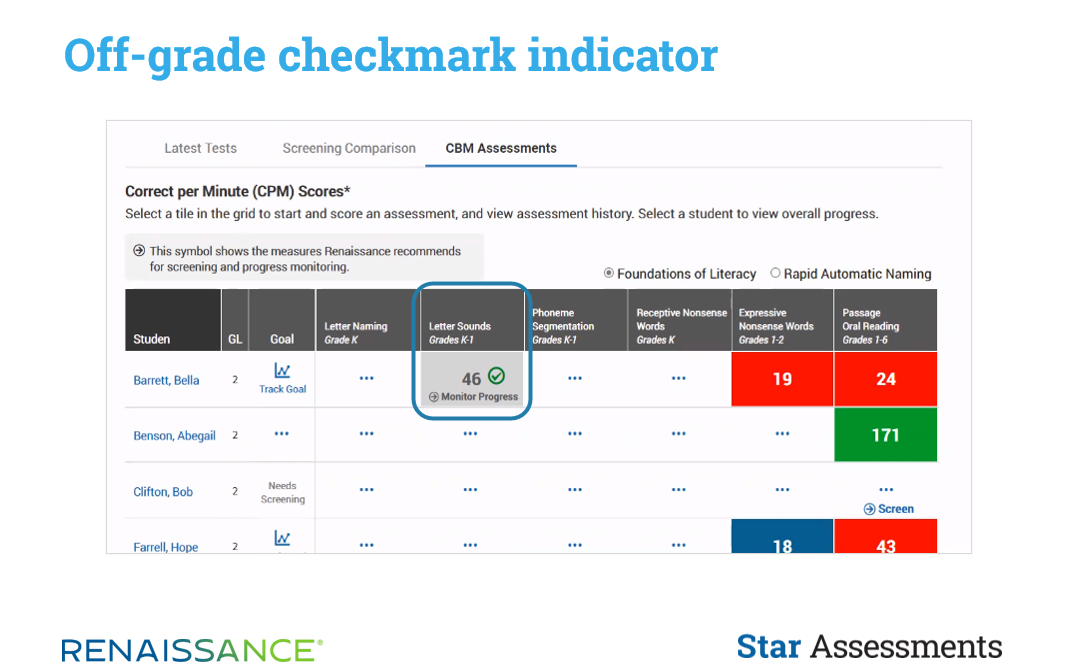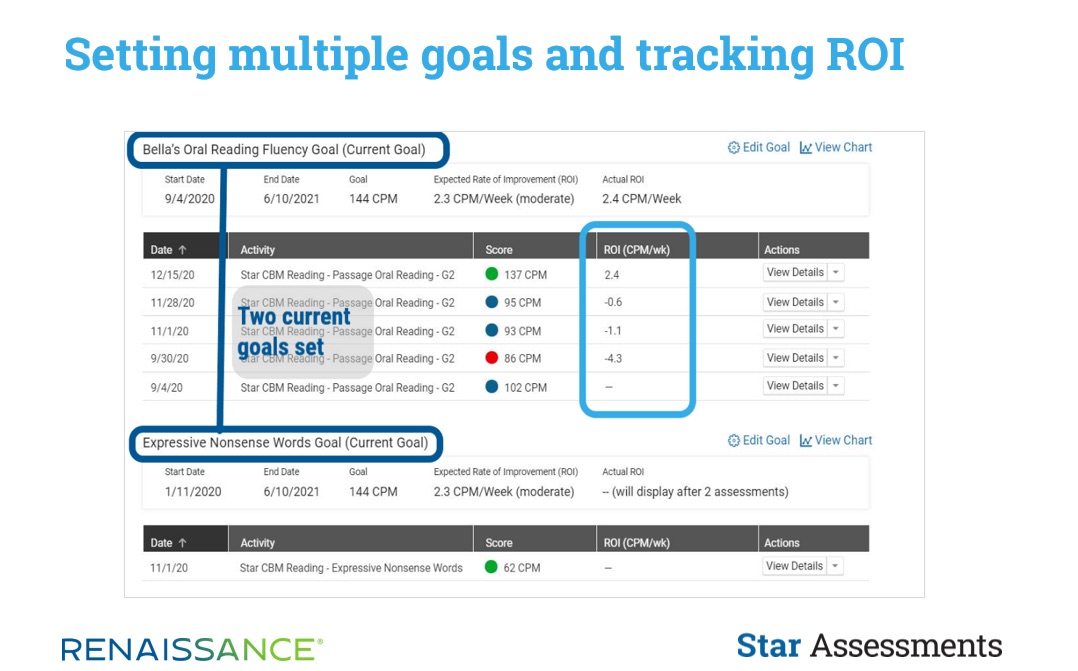New goal options and progress indicators in Star CBM
Throughout the past school year, we’ve been asking educators who use Star CBM, “How can we improve? What can we do to make Star CBM even better and easier to use? How can we further support you?” When we looked at their responses, the top requests were about meeting reporting requirements for student performance and progress monitoring.
With ongoing feedback from educators, we’ve made updates that make it easier to evaluate and report where students are, where they’re going, and whether they’re getting there fast enough. With these new insights, teachers can better understand performance and growth and adjust instruction where needed.
Off-grade checkmark indicator
Occasionally, a teacher may give a student a Star CBM measure that is not normed for the student’s grade level. When this happens, the Correct Per Minute (CPM) score is shown on a gray background. With this enhancement, educators will now also see a green checkmark when the student has met at least the 40th percentile for the nearest benchmark available. This helps teachers to see when students have at least a foundational understanding of the off-grade measure, so they can take appropriate next steps in instruction/intervention.
You can see an example of this below. Bella took Letter Sounds, which is normed for K and 1. Because she is a second grader, her score appears in gray because there isn’t a norm for grade 2. However, she did hit the 40th percentile for the highest benchmark available in grade 1, so we show a green checkmark.

Setting multiple goals for students
Sometimes, underperforming students are far enough away from grade-level expectations that progress is hard to meaningfully track. At other times, teachers want to monitor progress for multiple measures. The capability to set multiple goals in Star CBM works for both scenarios. Teachers can track progress where the student is receiving instruction and/or intervention support, as well as how that is impacting the student’s overall progress toward grade-level expectations. This also assists educators in reporting and tracking for evaluation of IEPs.

Rate of Improvement (ROI) calculation
The addition of an ROI metric helps you to see if a student is growing fast enough to meet their goals in a designated timeframe. Teachers often track ROI to evaluate the impact of instruction or intervention on student growth. Star CBM calculates CPM per week and shows the most up-to-date ROI as students test over time, as seen in the image above. For more information about how ROI is calculated and reported, please see this Help article.
Content updates
We’re revising all of the Receptive Nonsense Word and Expressive Nonsense Word forms to eliminate a few instances of R-controlled vowels and diphthongs. If you’ve printed any of the old forms for these measures, reprint the new ones (forms 21–40) for the 2021–2022 school year that eliminate these instances. Norms for these measures will stay the same, and we’ll continue to review student performance data and make other updates if needed.
Also, Star CBM Reading users in grades 4–6 will continue to have the option to administer nonfiction passages for Passage Oral Reading measures during the 2021–2022 school year. Using these passages gives you another option for observing student reading ability and provides data that will lead to full integration into Star CBM in the future.
Thank you for using Star CBM and providing feedback. We’re looking forward to delivering more features and options to Star CBM to make it even more useful to teachers, students, and administrators.
